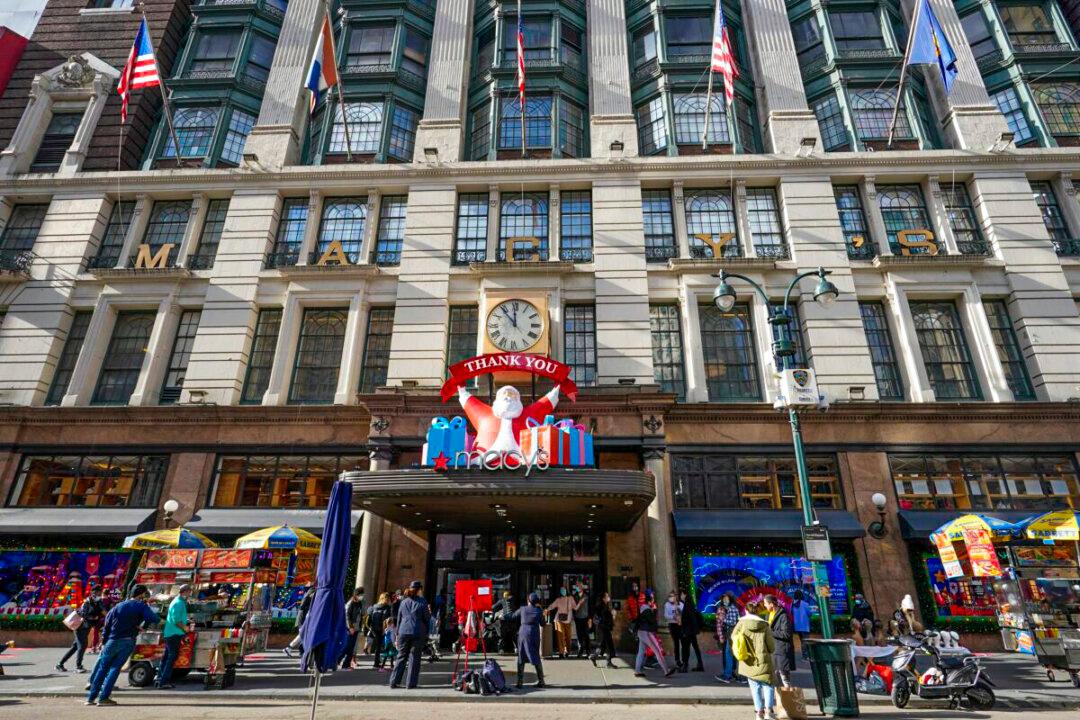Millions of American shoppers returned to shop and spend at retail stores over the Thanksgiving holiday weekend, as foot traffic rose 61 percent compared to last year, according to RetailNext, but still below pre-pandemic numbers.
Though sales have rebounded from the 2020 pandemic sales slump, Black Friday traffic at brick and mortar stores this year is 28.3 percent lower compared with 2019.





